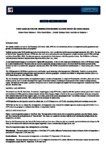Please use this identifier to cite or link to this item:
http://www.alice.cnptia.embrapa.br/alice/handle/doc/16834| Title: | Using SAR data for soil temperature regimes classification in São Paulo, Brazil. |
| Authors: | VALLADARES, G. S.  MARIN, F. R.   OSHIRO, O. T.   GUIMARÃES, M.   |
| Affiliation: | GUSTAVO SOUZA VALLADARES, CNPM; FÁBIO RICARDO MARIN, CNPM; OSVALDO TADATOMO OSHIRO, CNPM; MARCELO GUIMARÃES, CNPM. |
| Date Issued: | 2004 |
| Citation: | In: REUNIÓN ARGENTINA Y LATINOAMERICANA DE AGROMETEOROLOGIA, 10., 4., 2004, Mar del Plata, Argentina. [Anais]: Agrometeorologia y Seguridad Alimentaria en América Latina. Mar del Plata, Argentin: AADA, 2004. |
| Description: | The climatic variables are used in Soil Taxonomy (Soil Survey Staff, 1999) for soil classification, because it is important to plant germination and growth, soil formation and others soil properties. Synthetic aperture radar (SAR) interferometry has been shown to be a very cost effective tool for measuring digital topography (Zyl, 2001). The data of Shuttle Radar Topography Mission (SRTM) were the results of an international mission that generate a digital elevation model (DEM) with high resolution (Souza Filho, 2003). The data were generate and provided for South America with 90m spatial resolution. The SRTM was in February, 2000 and produced the most complete terrain map of the world (Foni, Seal, 2004). A radar interferometer images a scene from two slightly different positions. In the case of a single-pass interferometer, such as SRTM, these images are acquired simultaneously. This means that one needs to separate the antenna systems in space, but always know the relative positions of the antennas in order to reconstruct the topography correctly (Zyl, 2001). The SRTM actually flew two interferometers, a C-band system, and a X-band system. The DEM generate by SRTM has a good accuracy, and besides a great advantage in the homogeneous DEM quality. Therefore, it can be used to estimate the air temperature using multiple regression analysis, based on geographic coordinates and altitude as independent variables (Pinto et al., 1972; Pedro Júnior et al., 1991; Marin et al., 2003). The Soil Taxonomy criteria to define soil temperature regimes consider soil temperature at a depth of 50cm from the soil surface, these data are rare in Brasil, and are poor to classify soil temperature regimes in brazilian territory, classifying the major portion of the country in isohyperthermic regime. The objective of this paper is present a new perspective to classify soil temperature regimes based in air temperature estimated from SRTM data, for São Paulo State. |
| NAL Thesaurus: | Soil Taxonomy |
| Type of Material: | Artigo em anais e proceedings |
| Access: | openAccess |
| Appears in Collections: | Artigo em anais de congresso (CNPM)  |










